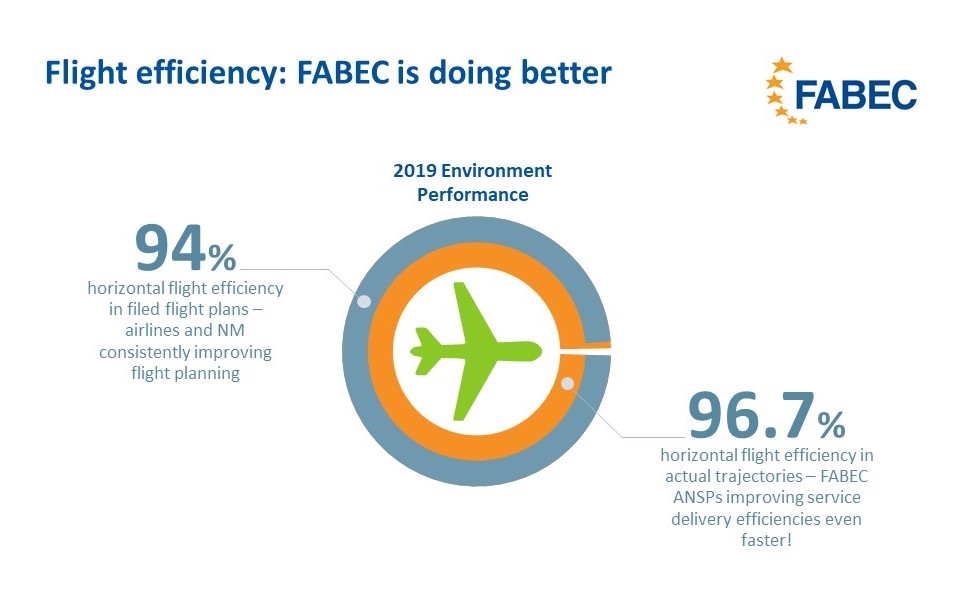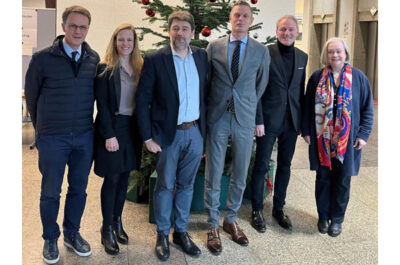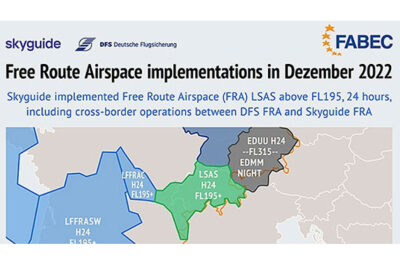Sharp traffic downturn during the pandemic has seen further gains in horizontal and vertical flight efficiency as FABEC air navigation service providers (ANSPs) provide more direct routes to reduce emissions and take advantage of reduced traffic volumes.
Functional Airspace Block Europe Central (FABEC) horizontal flight efficiency reached 96.72% in 2019, indicating flights in FABEC airspace flew close to ideal trajectories and approached their maximum possible efficiency. This is the equivalent of adding just 17km to the average flight length of 522 km; sometimes the result of airlines choosing to detour to take advantage of favourable winds, avoid bad weather, congested airspace or lower charging zones. The European Commission’s environmental report 2019 finds limited scope for further improvement.
Sharp traffic downturn during the pandemic has seen further gains in horizontal and vertical flight efficiency as FABEC air navigation service providers (ANSPs) provide more direct routes to reduce emissions and take advantage of reduced traffic volumes. Airspace users also benefit from the extension of cross-border free routes around the clock over Belgium, north-west Germany, Luxembourg, and the Netherlands since December 2019, and extending to neighbouring states Denmark and Sweden. As a result, airlines can access ideal flight efficiency performance levels, while taking into account ever-present constraints such as airline preferences, weather events, military training and safety aspects.
FABEC Standing Committee Environment Chair and Maastricht Upper Area Control Centre (MUAC) ATM performance specialist Ilona Sitova said: “The pandemic has provided an opportunity for air navigation service providers to demonstrate optimum flight efficiency. In April 2020 flight efficiency reached 97,65% in FABEC area, probably it is an upper limit even with clear skies as airspace users consider many different factors when selecting a route.”
Standing Committee Operations Chair and skeyes COO Peggy Devestel said: “Aircraft are following optimum flight profiles to the greatest extent possible in the current environment. Maintaining efficient network operations remains a priority for FABEC when traffic returns to pre-pandemic levels.”
Aircraft face constraints close to terminal airspace, much like a town centre where direct motorway links are replaced by local roads to safeguard safety, the environment and access routes. FABEC measures to increase flight efficiency contributes to reduced emissions and supports Europe’s Green Deal.
The airspace of the six FABEC States of Belgium, France, Germany, Luxembourg, the Netherlands and Switzerland is one of the busiest and most complex in the world. The majority of major European airports, major civil airways and military training areas are located in this area. FABEC airspace covers 1.7 million km² and handled 6.2 million flights in 2019 – 55% of European air traffic.
Vicky is the co-founder of TravelDailyNews Media Network where she is the Editor-in Chief. She is also responsible for the daily operation and the financial policy. She holds a Bachelor's degree in Tourism Business Administration from the Technical University of Athens and a Master in Business Administration (MBA) from the University of Wales.
She has many years of both academic and industrial experience within the travel industry. She has written/edited numerous articles in various tourism magazines.































































































































































































